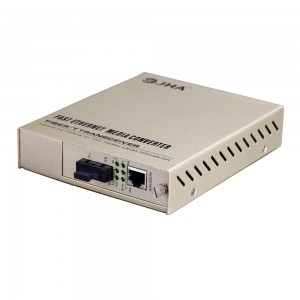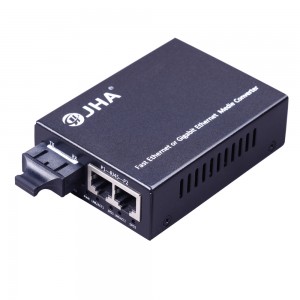As we all know, optical fiber media converter can be used to connect optical fibers and copper cables to achieve the purpose of extending the transmission distance. Managed and unmanaged fiber media converter are two common types, but do you know how to choose them? What is the difference between them? Next, let’s follow JHA Technology to learn more about it!
What is managed fiber media converter?
Managed fiber optic transceivers support carrier-class network management, and can achieve effective control and maintenance in a fully managed backbone network and edge network. It can provide additional network monitoring functions, fault detection and remote configuration functions.Managed fiber optic transceivers can be used with managed switches to add additional security protection to the LAN used to manage intellectual property or financial data. Managed fiber optic transceivers can be easily deployed in the network through a simple network management web interface, and can also be installed in the transceiver rack for centralized management.
What is unmanaged fiber media converter?
For customers, the unmanaged optical fiber media converter is the easiest network device to operate. It has a plug-and-play function that allows network devices to automatically communicate in the network. However, unmanaged optical transceivers cannot provide the same level of monitoring functions, fault detection and configuration functions as managed optical transceivers.In other words, when a failure occurs in the network, you cannot access the unmanaged optical fiber transceiver to check the cause of the failure. However, unmanaged optical transceivers are usually equipped with DIP functions, which can implement basic configurations such as duplex mode and auto-negotiation.
Post time: Dec-25-2020







